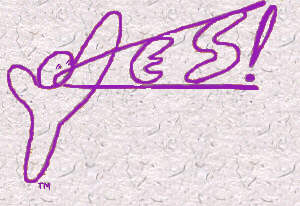

INTRODUCTION
To understand the origin of the curious book title, "YES, AND EVEN MORE", direct your attention to Matherne's Rule #5: "There's Allways Even More." It's always been one of my favorites. I have used it as a process in my life, in thinking about life. The double L is important; it reminds me to think of both meanings of always: for all time and in all ways. The rule can be seen as a deep song, a paean, to the immortal Spirit, of which it can be truly said, there's allways even more time and more ways. I came to Matherne's Rule #5 as an opening up of possibilities in my life. But that's not the end of the story.
"There's always even more?"
Yes. Soon this interesting phrase Yes, and even more began insinuating itself into my poems on a regular basis. I would be less than honest if I said I liked it at first. There was something strange going on, which is simply another way of saying I didn't understand it. But, as Matherne's Rule #2 says, "You never know until you find out", so I kept writing and hoping maybe it would either gradually disappear or explain itself.
The other day I decided perhaps YAEM was trying to tell me something, like "(hint, hint, wink) the name of your next book".
"So that's how this book got its title, directly from the persistent phrase itself."
Yes, and even more.
CAVEAT
I must caution you, Readers, that this is not an easy book to read. You will have to study the INSTRUCTIONS and BOOK JACKET poemlets carefully, and be able to audition for the poemlet with confidence before you should attempt to read the rest of the book. A poemlet is my name for these dialogue sequences that form mini-plays and are published with their sub-text in the form of notes.These are not just dialogue pieces that are meant to be read aloud, they must be read alone and aloud at first, in order to hear the dialogue that is taking place. A long poemlet entitled Live in Freedom is available for you to read after you've studied the introductory examples.
For first time readers I'll give some guidelines for starting. First select the person whom you want to do the quoted dialogue. Choose someone you live with or is close to you in some way. Then, whenever you come across a double quoted line, like "Yes, and even more," you use or imagine hearing that person's voice. Bobby's suggestion is that you speak the unquoted dialogue as yourself -- I don't know why. It's probably an author's thing.Once you have the voices ready, you may begin. Oh, excuse me, you will need three voices: self (no quotes), other (double quotes), and both self and other in unison (single quotes).
Voices ready? Okay, start reading a poem aloud, switching voices as marked in the text. Don't allow yourself to be intimidated, especially if you've never done someone else's voice before. Bobby assures me he didn't feel confident when he started reading them. Start with your normal voice as the self voice, and raise or lower your pitch a little depending on whether the other's voice is higher or lower than your own. For both voices in unison, just increase your volume slightly. You will be automatically in unison.
"Sounds like fun."
Yes, and even more. Soon you're ready for couples action.
(Can I get a little drum roll here?)
"Is that when two of us do it together?"
Yes, and even more. You read the self part aloud, and the other person reads the other part aloud.
"What about both voices in unison?"
Yes, you will want to get that right.
"Is that like a one-ding ding?"
Yes, and even more.
[For those of you unfamiliar with the one-ding ding, it's a little process that Bobby and Del do together. When clinking glasses together during a toast, Bobby noticed that there were always multiple ding's as the glasses collided. With practice he and Del were able to create a single, clear DING! when their glasses touched. It is a revelation to attempt the one-ding ding because you will find that one person always starts first, goes faster, etc. To create the one-ding ding requires attention to the process by both people and synchronicity in their movements all the way through to the bouncing away of the glasses and the broad smiles that always accompany a one-ding ding. Since noticing this phenomenon, I'm convinced that Hollywood always dubs in the one-ding ding sound when glasses are dinged during a toast. They can't afford to do the re-takes necessary to get the sound right.]
Read the first poem in the book called INSTRUCTIONS. It has examples of each of the various kinds of readings we talked about plus a switch of parts at the end. Go on try it. Remember, if you have a few problems, you're not slow, or retarded; you're just reaching for opportunities to learn more about yourself and others.
The Shower Cap
--- from the PrefaceThese poemlets are wild and crazy at times, but easily within reach of someone with a sense of humor, a love of ambiguity and an expansive, informed reading capacity. And sometimes that isn't enough.
"Like when?"
Like in The Poem of My Life or a long 28 part poemlet called Doyle's Operaperta.
This material is COPYRIGHTED (C) 1997 21st Century Education, Inc
Note: Web Page is still Under Construction